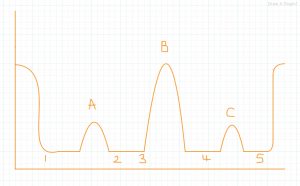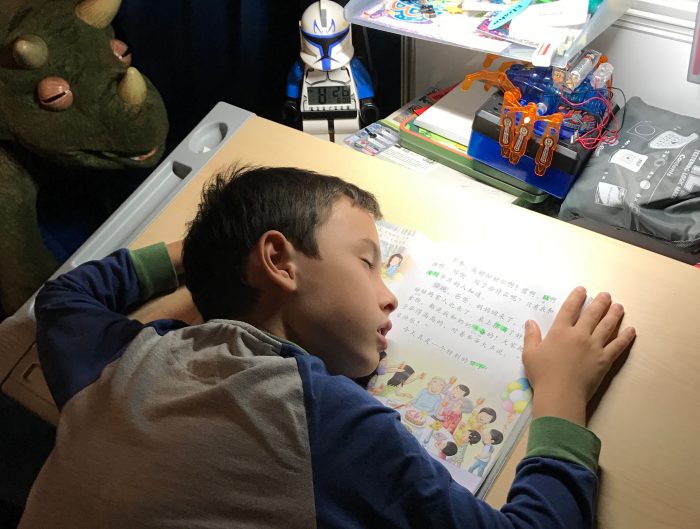
Establishing a Routine
We know that good routines are important for us; people are constantly writing about how routines, or regular habits, make us healthier, happier and more productive. But what about baby? Is establishing a routine beneficial for her? Will she even notice… or care?
Multiple studies have shown that establishing a good routine early in a baby’s life helps her to sleep better, and longer, and is useful in reducing infant and maternal stress. Infant sleep problems are one of the most common reasons for a visit to the paediatrician; over 90% of paediatricians recommend a regular bedtime routine as part of their intervention strategy.
It is important to note that, whilst bedtime routines are very important, routines and habits during the day are important as well, and can impact the effectiveness of the bedtime routine.
What Makes A Good Routine?
A good routine will provide a regular bedtime, and regular, age-appropriate daytime naps. A great routine will also schedule regular meal and snack times.
I see many parents who have tried and failed to establish a routine in their family. Often, they have read a book about establishing a routine and they attempt to copy it verbatim. Although I usually give parents a copy of my routine, I stress that it is a “template” for them to adapt to fit their family.
Each child is unique, and they live within the context of unique families with different cultural and societal factors. Therefore, no two routines are likely to be the same. In fact, I often find that a routine that worked perfectly for the first child in a family needs a bit of adapting to fit the second, and then the third child.

Older sibling sleeping
How To Establish A Good Routine:
You can start establishing a good routine as early as you like. It is possible to start very early on, but a good time is usually around the end of the first month, when you start to get your head above water again. Start with the beginning and end of the day. Set a fixed time to start the day- and stick with it, no matter how awful the previous night was!
Similarly, make sure you keep to a fixed bedtime. Set a bedtime routine or ritual; for example, a good one to use would consist of bath time, followed by a gentle baby massage, a milk feed wiht the lights dimmed and some gentle music playing, followed by laying your baby down in her cot.
Once you have the start and end of the day figured out, pay attention to the space in between. Does your baby seem to get hungry at around the same intervals? Does she display signs of tiredness at around the same times? Often, a little careful observation will give you clues as to a routine which will work for you. Take a look at Is My Child Getting Enough Sleep? for advice on the recommended number of hours of sleep your baby needs.
Consider how your routine will impact on other family members. Do you need to be awake at a certain time to get other children ready for school? Or does bedtime need to happen a little later so Daddy can say goodnight? Does the afternoon nap need to shift to accommodate picking up older siblings from nursery, etc.
A Sample Routine:
The following routine is designed to give you a start in planning your routine. The best routine is one which is tailored to your family’s individual needs, so you will need to spend a bit of time thinking about this, and “customising” it to suit you.

Routine Template
For example, point one (waking up time, and approximately the time of the first feed) may be at 7am. The first daytime nap (point A) would fall approximately one and a half hours after the waking up time (8.30am if waking at 7am), and lasts around 45 minutes. Feeds number 2 and 3 would fall at around 10am and 1pm, after which baby would have a two hour nap (approximately 1-3pm). Feed number four may fall at around 4pm, with a short 30 minute nap afterwards, and the final feed of the day at approximately 7pm.
Depending on the age and weight of the baby, you may need to still do a 10pm feed, although by around 4-6 months many babies in a comfortable routine may be able to sleep uninterrupted from 7pm to 7am.
Usually, the late afternoon nap (C) is the first to disappear, at around 6-10 months of age. This is followed by the morning nap (A) at around 12-18 months of age. The midday nap (B) usually persists until around 2-3 years of age.
Further Reading:
You may wish to read further on the medical studies that have been done on routines and their beneficial effects. The following is a useful article published in Sleep Journal which summarisies the major findings.
A Nightly Bedtime Routine: Impact on Sleep in Young Children and Maternal Mood
Have you tried adopting a routine? How did it work for you? What were the factors that helped or hindered? Let me know how you got on in the comments below.
As always, if you enjoyed this article, please subscribe to receive weekly parenting and medical advice direct into your inbox. Have a great week ahead.



2 Comments
I am definitely gonna be a fan of your posts! Fantastic write ups with sound advices. Wonderful. I have to thank you for taking time to write and thus share.
Thank you so much, Eileen.